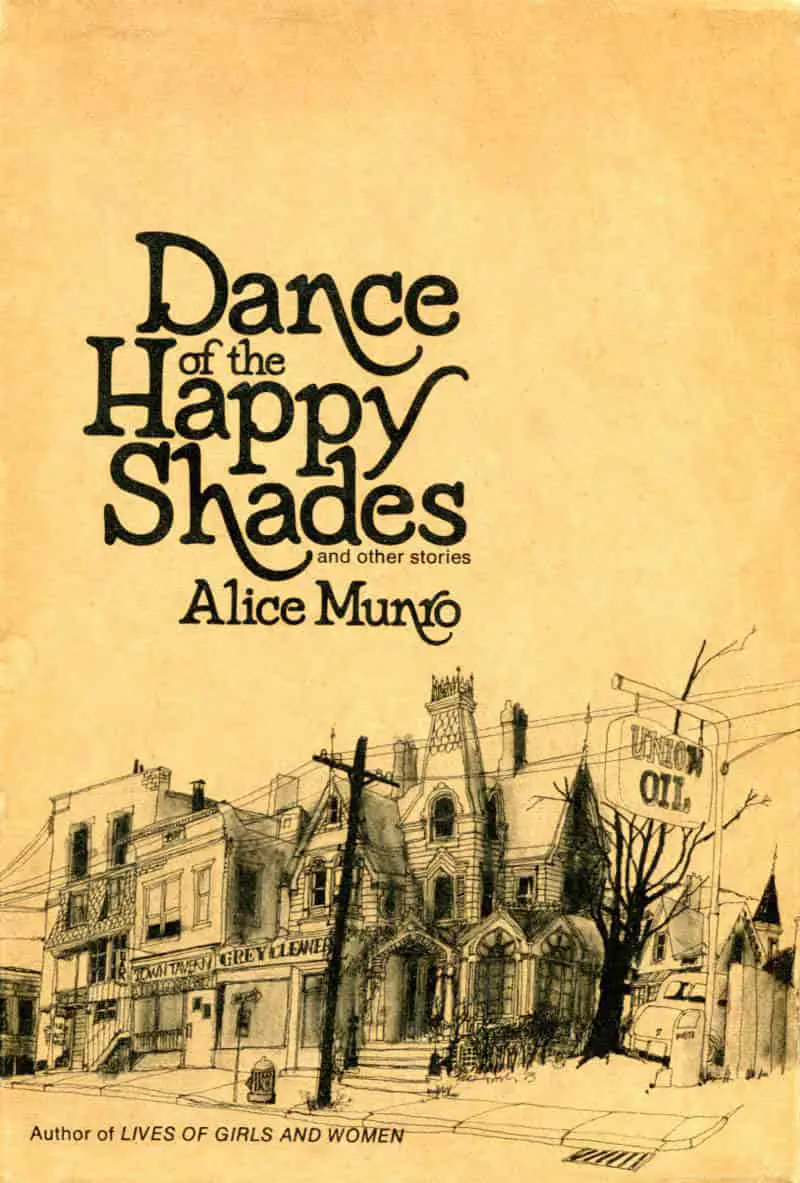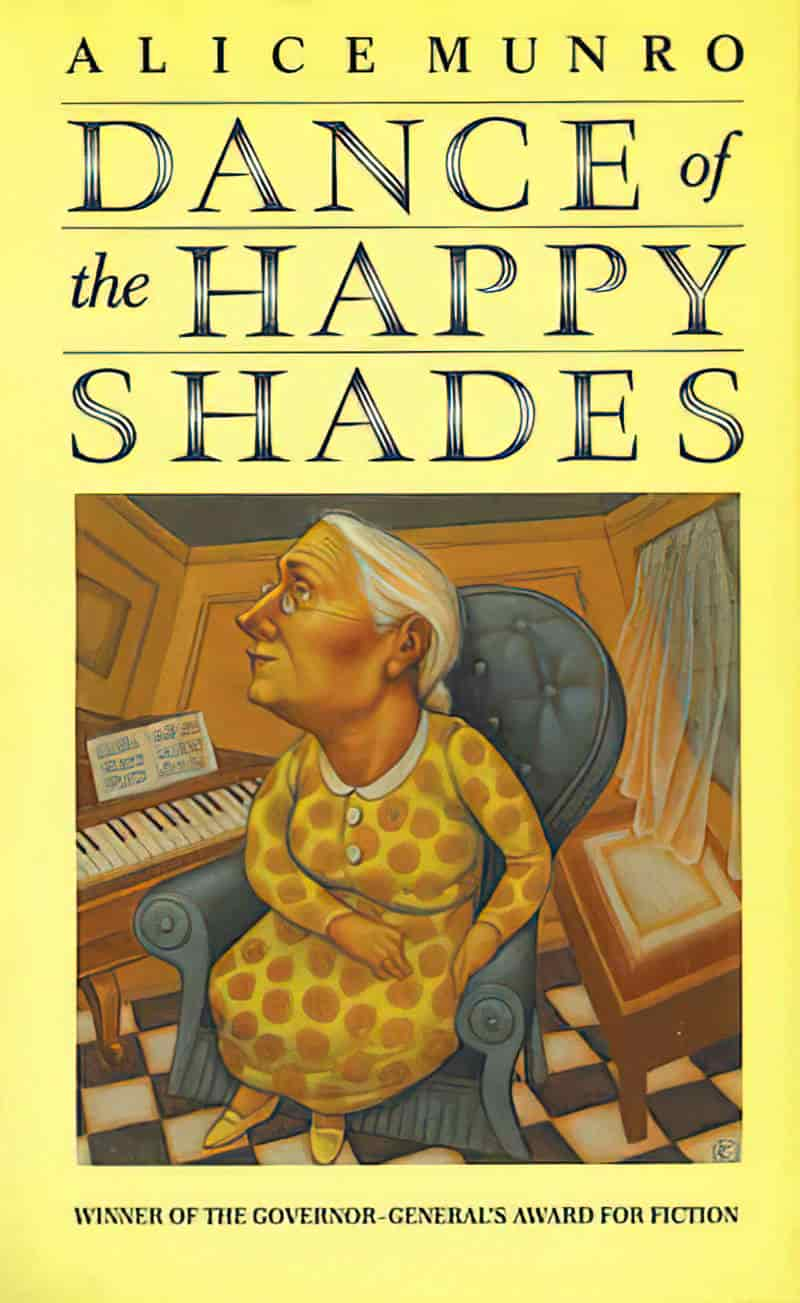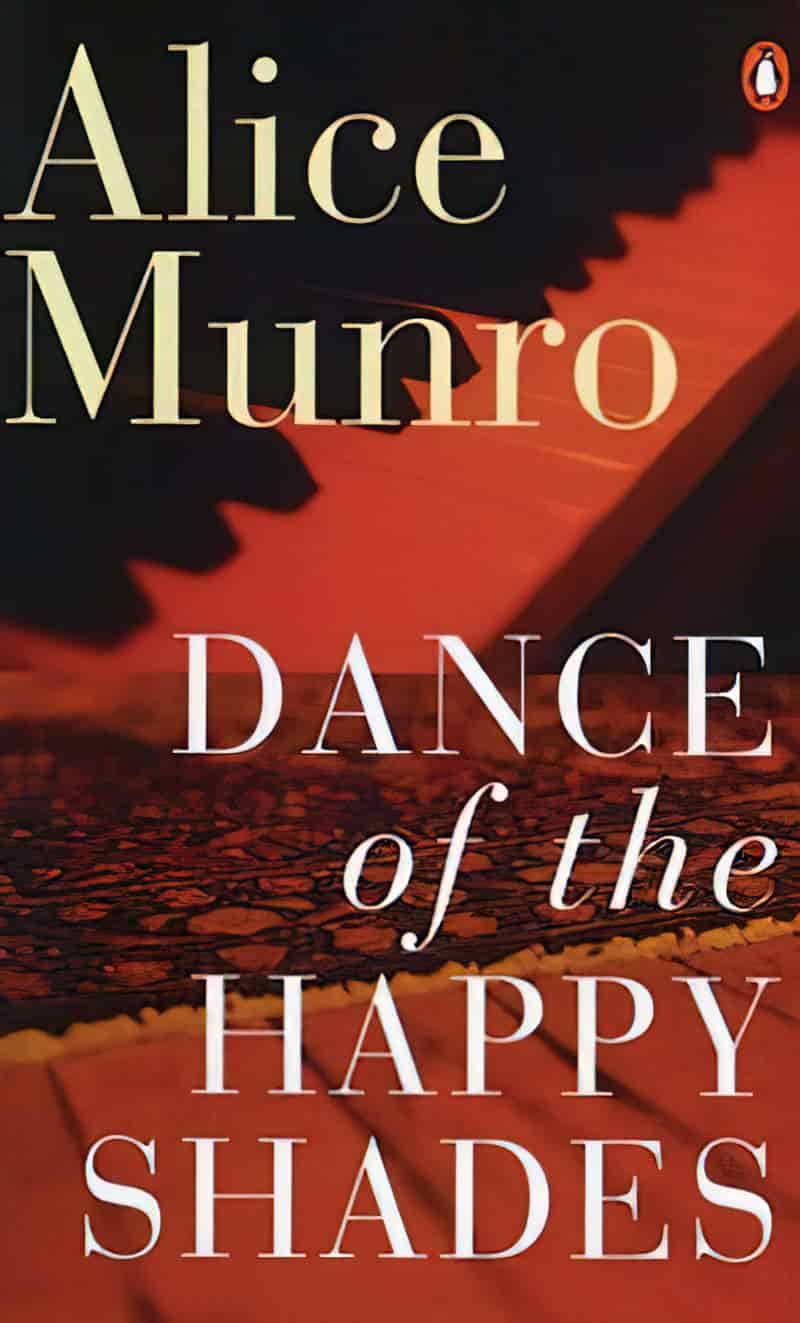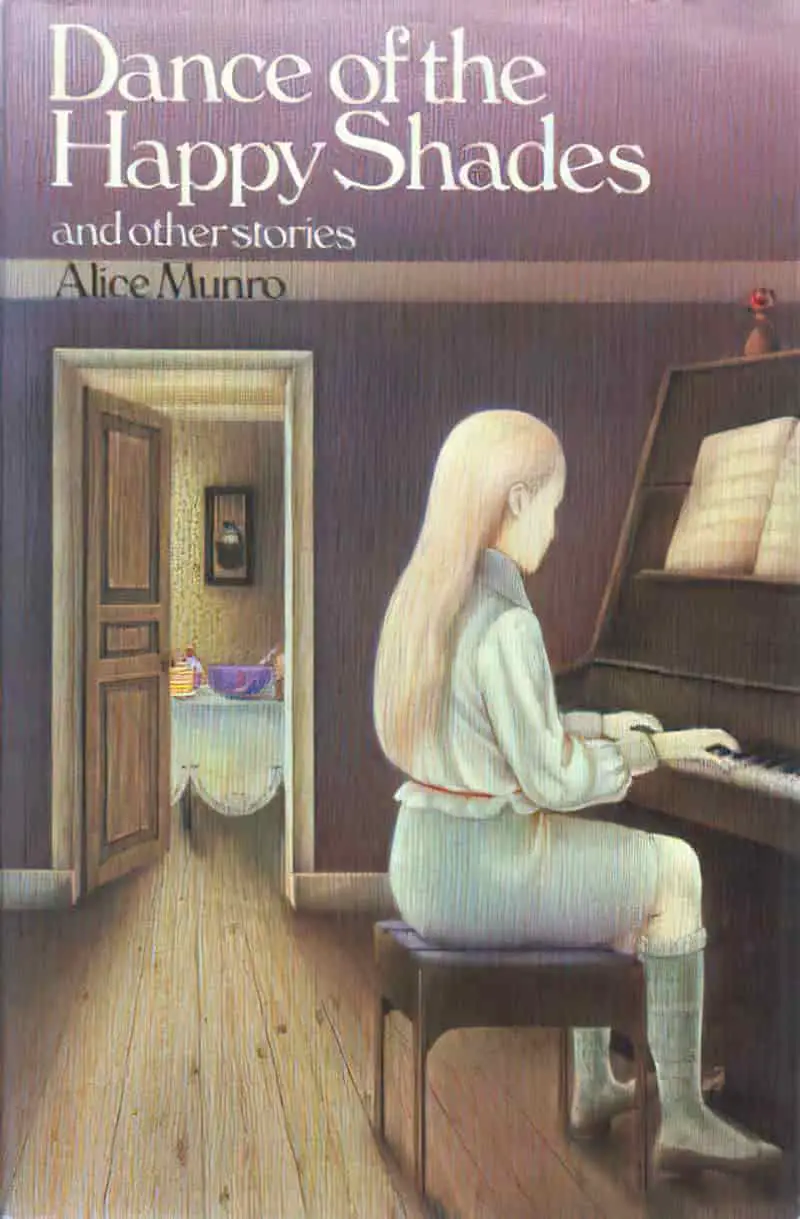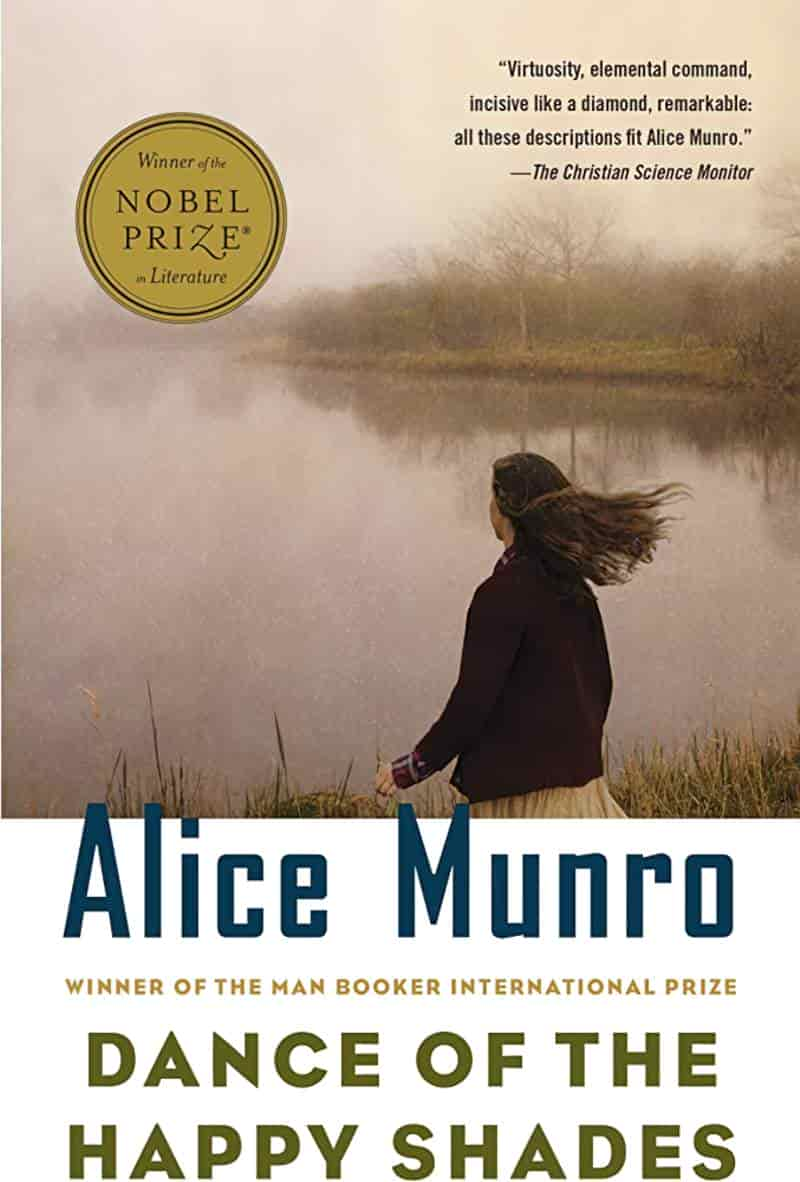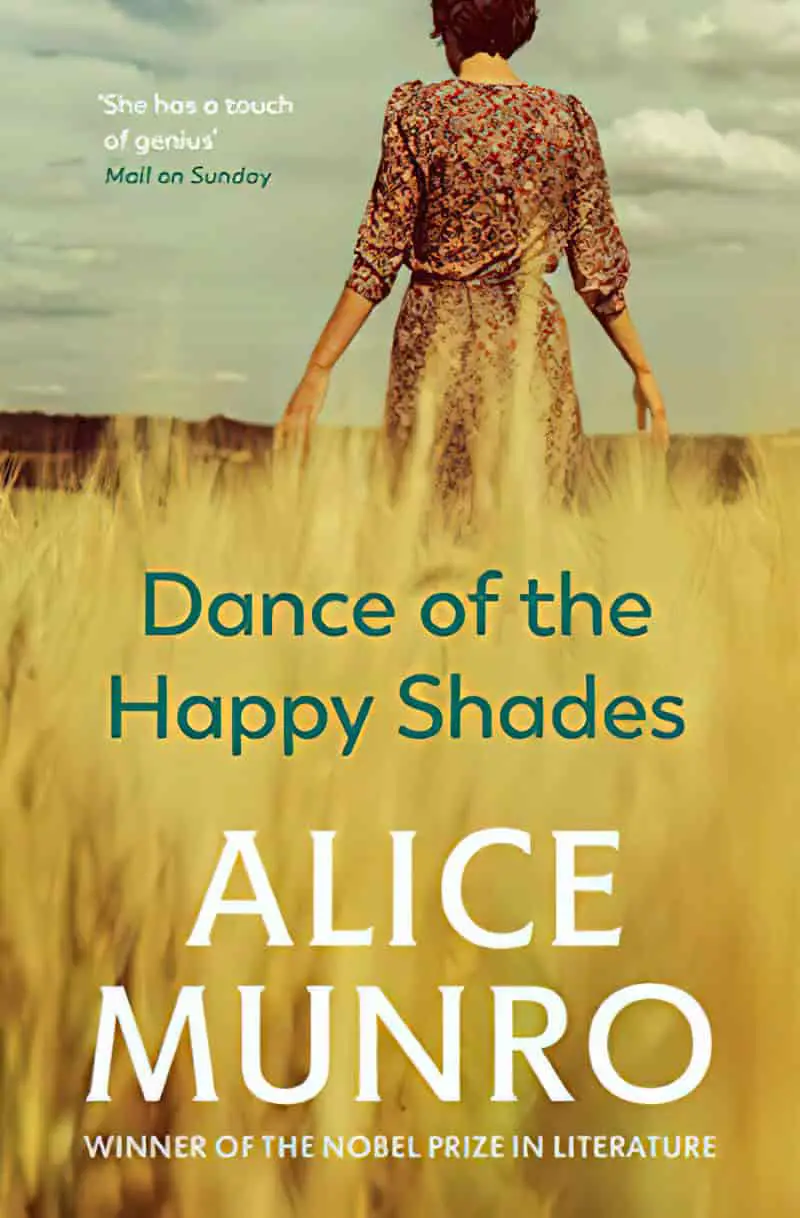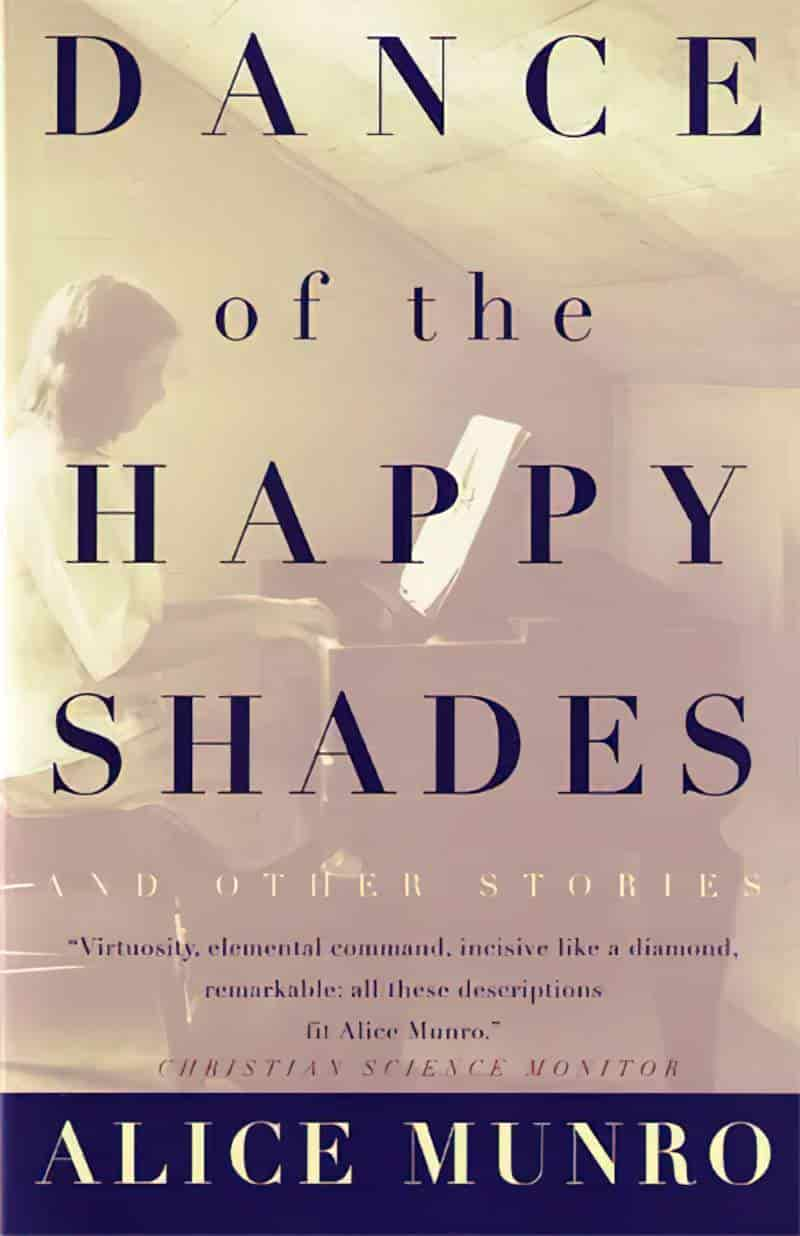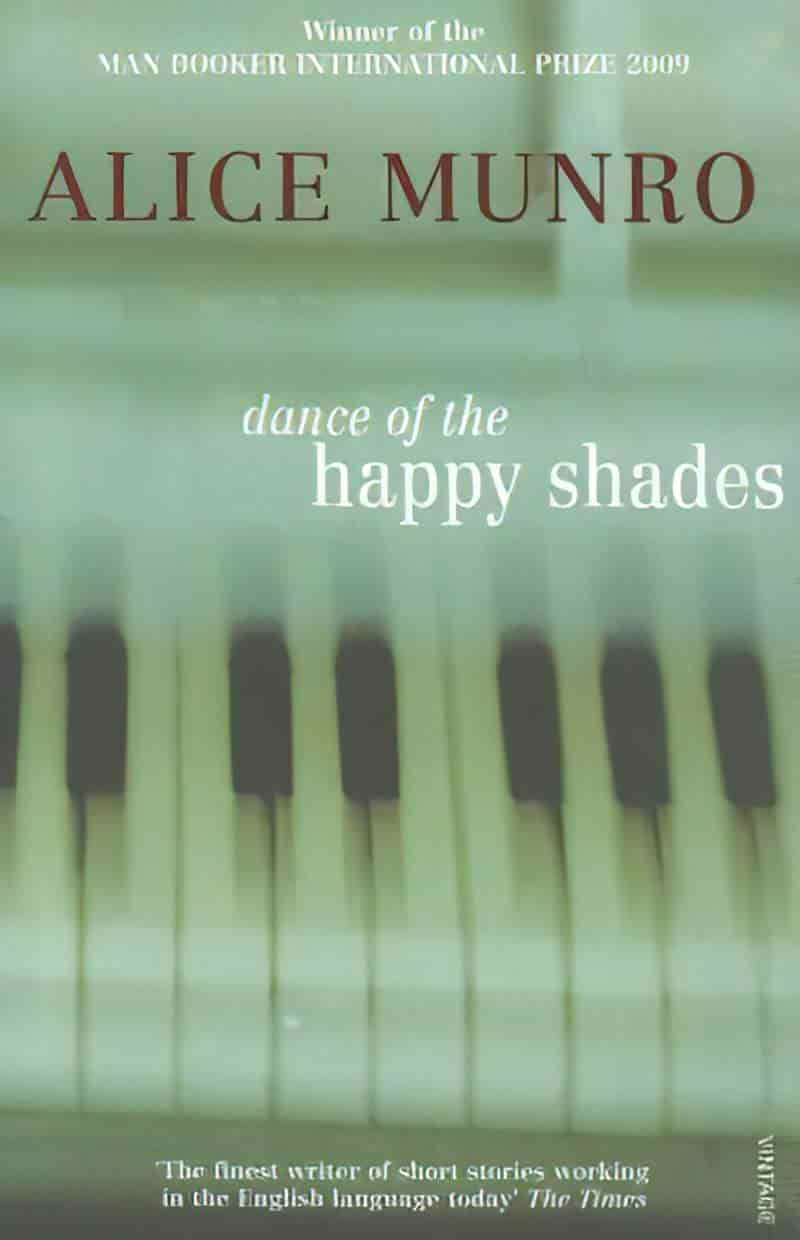**UPDATE LATE 2024**
After Alice Munro died, we learned about the real ‘open secrets’ (not so open to those of us not in the loop) which dominated the author’s life. We must now find a way to live with the reality that Munro’s work reads very differently after knowing certain decisions she made when faced with a moral dilemma.
For more information:
My stepfather sexually abused me when I was a child. My mother, Alice Munro, chose to stay with him from the Toronto Star
Before Alice Munro’s husband sexually abused his stepdaughter, he targeted another 9-year-old girl. ‘It was a textbook case of grooming’ from the Toronto Star
So, now what?
Various authors on CBC talk about what to do with the work of Alice Munro
And here is a brilliant, nuanced article by author Brandon Taylor at his Substack: what i’m doing about alice munro: why i hate art monster discourse
“Images” is a short story by Alice Munro, first published in Dance of the Happy Shades (1968). This story comprises two character studies through the eyes of a woman looking back on her own early childhood.
One character study paints a portrait of a second cousin once removed, who prevails upon the household to take care of things when her mother is sick. The other is a strange and wild-living (mentally ill) man she and her father meet one day in the woods.
There’s definitely a fairytale/folkloric vibe to this story, which Alice Munro was clearly going for. Let’s skip for a moment to the final paragraph:
Like the children in fairy stories who have seen their parents make pacts with terrifying strangers, who have discovered that our fears are based on nothing but the truth, but who come back fresh from marvellous escapes and take up their knives and forks, with humility and good manners, prepared to live happily ever after, like them, dazed and powerful with secrets, I never said a word.
“Images” by Alice Munro
A DISTINCTION BETWEEN ‘AFFECTIVE FEEL’ AND ‘PLOT’
Ulrica Skagert says the following when analysing “Images” by Alice Munro. This is more sophisticated than my phrase, ‘fairy tale vibe’:
No critic has explored the tension between possibility and fatality that I see at the heart of Munro’s writing, and though my study tends towards the thematic, I am using a slightly different notion of this term. Carscallen exposes theme as a feature expanding over a surface; I am interested in the quality that holds a theme together.
In my view, each new variation of the theme invites a deeper understanding of its essential peculiarities. In order to picture this difference, we might follow Munro’s protagonist in “Images” walking along the Wawanash River: which was high, running full, silver in the middle where the sun hit it and where it arrowed in to its swiftest motion. That is the current, I thought, and I pictured the current as something separate from water, just as the wind was separate from the air and had its own invading shape. As it is possible for the girl to separate the substance from its movement, it seems possible to separate meaning from the actual words, or rather the affective feel from the plot of the story. What is in focus then is not the substance of the theme, but its sensuous quality as perceivable alongside the theme.
Ulrica Skagert
Okay, let’s put that in a chart for digestibility:
| PLOT | THEME | AFFECTIVE FEEL |
| what happens in a novel, film etc. | a sentence, not a word | the quality that holds a theme together |
| how an author chooses to arrange the events of a story, to best manage audience experience | tells an emotional (not a moral) lesson | as in a river: when a current is separate from the water |
…when I lay in my crib too hot to sleep I could look up and see that emptiness, the stained corners, and feel, without knowing what it was, just what everybody else in the house must have felt—under the sweating heat the fact of death-contained, that little lump of magic ice.
“Images” by Alice Munro
“IMAGES” AS INTERMEDIAL SHORT STORY
Julia Kristeva introduced the term intermediality in 1986. This term describes ‘a literary work referring to another medium’. In this case, it’s all in the title: “Images” could refer to a story told via the medium of photography. Imagine a photo album, containing the following:
- a blurry or overexposed photo of Mary McQuade
- a dark house, seen from child height, with blinds drawn, light peeking through the cracks to the juxtaposition of a bright landscape outside
- a low angle shot of young Aunt Edith playing the piano
- a first person view from a crib, by a child too old to be sleeping in a crib and old enough to be at the memory forming stage—a ceiling stained at the corners (symbolically like the edges of memory)
- an elderly white-haired man confined to his bedroom
- etc.
I feel Alice Munro is moving the narrative camera around with a recognisably Hitchcockian Touch, leading readers towards something potentially horrific lurking in the woods. All stories contain images, and they all exist on a continuum. But “Images” is at the visual end of a continuum, as is almost always the case when the viewpoint character is of preschool age. (Most people gradually become more verbal, analytical and less observant.)
COMPARE AND CONTRAST
“The Little Photographer” by Daphne du Maurier is an example of intermediation like this one (a short story plus photography).
From children’s literature, this short story might also be compared to a number of stories in which the death of a parent overshadows a child’s life as they sense something terrible about to happen and notice the many changes happening within the household. One is young adult novel A Monster Calls by Patrick Ness. Another is comic book I Kill Giants. Both have been adapted for film.
Notably, both make use of monsters to personify the fear of losing a mother. The ‘monster’ in Munro’s short story for adults is Mary McQuade, whose iceberg monstrosity is perceived as scary by the young girl, but who readers will likely understand as a far more sympathetic character. The other potential monster is a wild man living in the woods. He, too, is soon transmogrified back into not a monster but a very human man suffering from some kind of psychosis.
CHARACTERS IN “IMAGES” BY ALICE MUNRO
FIRST PERSON NARRATOR
We don’t know the exact age of the narrator when this story plays out, but she’s young enough to be sometimes carried by her father but old enough to be trusted not to fall into a river while out in the woods.
MARY MCQUADE
The young narrator thinks of Mary McQuade as an iceberg:
I pretended not to remember her. She had not put on her white uniform, which did not really make her less dangerous but might mean, at least, that the time of her power had not yet come. Out in the daylight, and not dressed in white, she turned out to be freckled all over, everywhere you could see, as if she was sprinkled with oatmeal, and she had a crown of frizzy, glinting, naturally bras-coloured hair. Her voice was loud and hoarse and complaint was her everyday language.
“Images”
With this wonderful thumbnail character sketch followed by a few more details I’m imagining a cross between Misery’s Annie Wilkes and Kath and Kim’s Sharon Strezlecki.
Like Stephen King’s Annie Wilkes, Mary is a so-called professional nurse who has put herself in charge of someone else’s care (possibly causing further harm).
Like comedic character Sharon Strezlecki, she has red hair and freckles and is herself afflicted by a barrage of health complaints. Though the little girl finds Mary terrifying. Mary is not her own mother, whose ways and smells are familiar. However, we can see from the father’s reaction to her that Mary’s slapdash but practical housekeeping and her insensitive but pragmatic personality is exactly the forcefield this small family needs.
The narrator’s first experience of death was that of her grandfather. Next it is her own mother. Again, Mary McQuade appears, like some benevolent, female grim reaper, ironically dressed in white instead of black.
This irony transforms into non-irony as the story progresses, and the young narrator learns that Mary McQuade is no one to be scared of.
Alice Munro is known for writing numerous stories about women who are caregivers. In fact, this topic has been called an obsession. Generally it’s an older woman being taken care of by a daughter-figure. Not surprising since Alice Munro herself was a caregiver for her own mother when Munro was herself a young woman. Munro has expressed regret at leaving to go to university instead of staying home and caring for her mother. The caregiving women in her stories are sometimes very good at their caregiving duties, others not so much.
ALICE MUNRO’S FICTIONAL CAREGIVERS
- “The Peace of Utrecht”
- “Images”
- “Memorial”
- “The Ottawa Valley”
- “Winter Wind”
- “Spelling”
- “Friend of My Youth”
- “Wigtime”
- “Accident”
- “Chaddleleys and Flemings: Connection”
- “Family Furnishings”
- “Soon”
- “The Ticket”
I am reluctant to call this subject matter an ‘obsession’, as it suggests an unhealthy or non-adaptive interest in those people, largely women, who have otherwise been utterly invisibilised in fiction (and underappreciated by society). One could also argue that Munro only wrote 12 stories about the ill mother/caregiver dyad, which, if realism is a goal, comprises a disproportionately low number of fictional women who spend a part of their lives caring for a relative compared to how many fictional women Munro created in total, and how many real world women find themselves in caregiver role at some point.
Back to “Images”. The narrator recalls Mary’s body aroma:
Outdoors, in the cold March air, [Mary] lost some of her bulk and her smell. In the house I could always smell her, even in the rooms she seldom entered. What was her smell like? It was like metal and like some dark spice (cloves—she did suffer from toothache) and like the preparation rubbed on my chest when I had a cold. I mentioned it once to my mother, who said, “Don’t be silly, I don’t smell anything,” So I never told about the taste, and there was a taste too. It was all the food Mary McQuade prepared and perhaps in all food eaten in her presence—in my porridge at breakfast and my friend potatoes at noon and the slice of bread and butter and brown sugar she gave me to eat in the year—something foreign, gritty, depressing. How could my parents not know about it? But for reasons of their own they would pretend. This was something I had not known a year ago.
“Images” by Alice Munro
The thing about children: They have a keen sense of smell. Aromas can transport us back to early childhood. When we are babies, our sense of smell is one of the most important senses. Sense of smell gets stronger until we are eight. Smell can be a source of comfort or terror and everything in between. The sense of smell (which is technically two separate senses) promotes the development of their other senses, especially taste and vision. Any story written authentically from a child’s point of view will likely include smell:
Children take a while to fully develop theory of mind. It is inconceivable to this young child that the adults in her life cannot smell and taste things which she so clearly smells and tastes. (I suspect anyone with sensory processing differences will relate strongly to this.) The young narrator believes her parents are pretending not to have the same sensory experience of the world as their child. This makes her wonder, what else is everyone pretending not to know? Taking her parents’ lead, the little girl pretends not to remember having met Mary McQuade before.
Likewise, the fairy tales read by her mother so full of symbolism and resonant imagery for the young girl, but are immediately forgotten by the mother. The older women in this family are a fast-forward to the person the girl will one day become, whether these women be caught up in the busyness of running a household, or fully immersed in the mundane misery of illness.
When the rough and rather slapdash Mary McQuade invades the house, the young narrator perceives that she does things on purpose. Readers will understand that (unless a practical joke) Mary has not deliberately stuck a dead fly to the bottom of the father’s glass, but that this is the sort of thing that happens at a farmhouse in summer. Likewise, she wouldn’t have deliberately given someone a fork with a prong missing out of spite. Our young narrator notices everything, especially things which are different from how the house is normally run. (The father throws the fork at Mary, which the young narrator is scared by at first, until she realises at some point—between scene and the reflective writing of it—that this is part of her father and Mary McQuade’s playful banter.) The irony of young childhood: You see everything, which actually makes situations more difficult to understand. In noticing the missing prong, she has missed the context: playful banter. (There’s a theory about autism which proposes that a lack in cognitive empathy is due to sensory overload—whenever we notice every little thing, it becomes far more difficult to understand a big picture. This applies to ‘neurotypical’ toddlers as it endures for many autistic brains.)
Perhaps you can think of an instance of toddler-like perspicacity from your own early childhood. I remember being looked after by a mother who lived across the road. She helped me put a jersey on one day, but unlike my own mother, who first slipped the entire garment over my head and then guided my arms into the sleeves, the woman over the road ordered me to put my arms into the sleeves first. Only once my arms were inside the sleeves did she slip the jersey over my head. Clearly, this tiny difference made such an impression on me that I can tell you about it now.
MOTHER
Unlike the women in the father’s side of the family (Mary McQuade included), the mother is known for being ‘sensitive’. This is not considered a good thing.
Whereas Mary McQuade is compared to a scary iceberg, the narrator’s mother, a peripheral character sick in bed, is also partly submerged (under blankets). Hence the arrival of Mary McQuade in the house.
…her cheeks were sallow, her neck warm and smelling of raisins as it always did, but the rest of her under the covers had changed into some large, fragile and mysterious object, difficult to move.
“Images” by Alice Munro
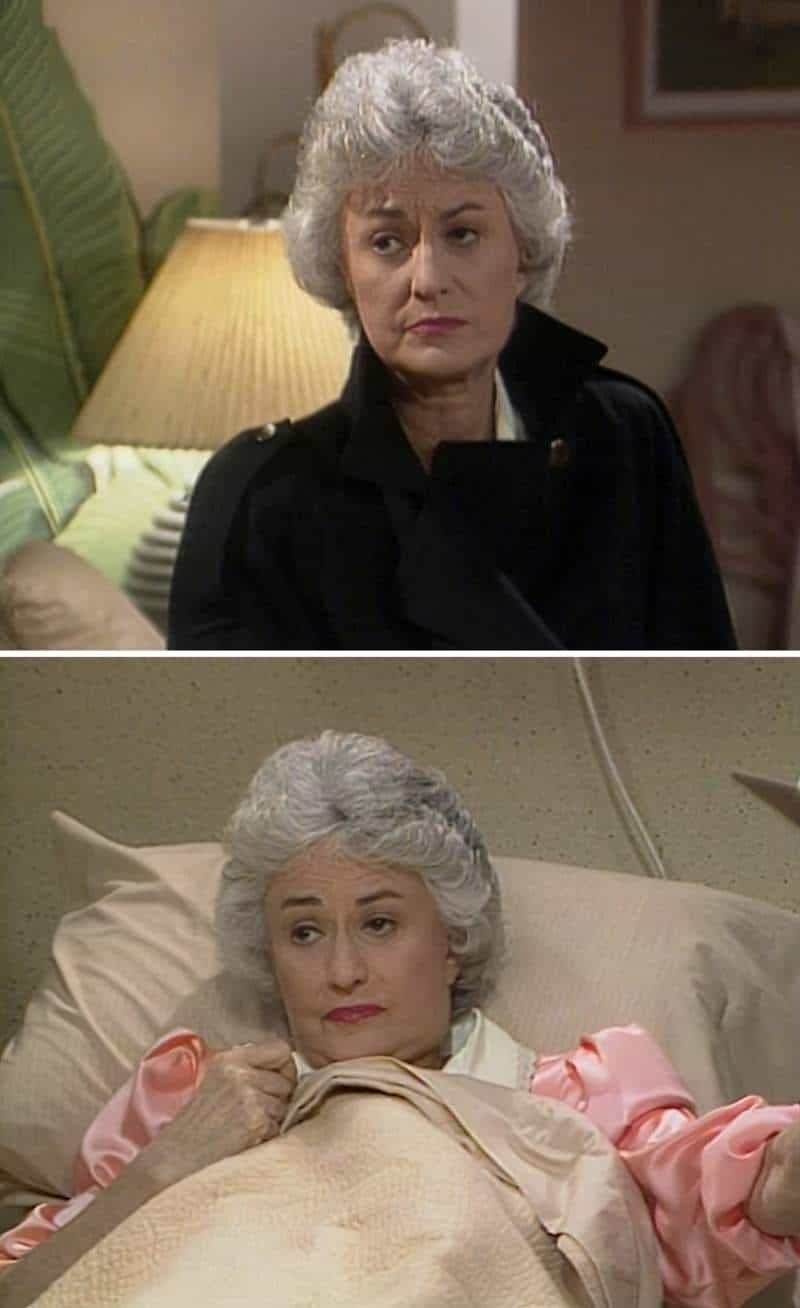
Perhaps you, too, remember early childhood and the shock of realising something had more to it than you realised, because something normally hidden is suddenly revealed.
For me it was watching my mother push her hair over her ears. For whatever reason, I had thought that (unlike everyone else) my own mother didn’t have full ears, only lobes, with tiny red studs. One day she pushed her hair over her ear, I was so shocked to learn she had a full ear, just like mine, that I still remember it to this day. Likewise, children are shocked to learn that people have naked bodies beneath their clothes, that things happen behind closed doors which they are not privy to. Children (like my poodle cross) are intent on looking into receptacles to see what is there. Young children open cupboards and drawers and rifle through whatever they find in there, as tiny scientists learning about the world, always surprised to see there’s more to something than first meets the eye.
We lose much of that wonder after we learn that of course things have another side to them. This diminishment of curiosity can go too far, in fact. Once we learn that everything has more to it, we use heuristics which save us much time, but which also lead us to understanding the world wrongly. A superpower of the child: Looking at what’s really there, rather than what they think must be there.
This somewhat explains the title, “Images”. This little girl is going through a developmental stage — psychologists probably have a name for it — in which she ‘progresses’ from searching for the entirety of things to the more adult-like way of seeing: a heavy reliance on the sense of sight for one thing, and also a lack of curiosity which comes from needing to get the washing done, so to speak (hence the scene with Mary McQuade hurrying the little girl along — she is no longer allowed to be a toddler, messing around in the corner — inducted into housework she is required to pass pegs, significantly, one at a time, like a series of images rather than like a holistic intake using all the senses).
The power of a story is in emotion, and that’s just as powerful as your ability to imagine.
Comparing kids with adults, the mind of the child is much more exploratory than an adult mind. Through development, we talk about this balance shifting. Kids can be totally random and notice the weirdest things, they’re quite content with make-believe games, holding a banana and it’s the telephone, or whatever. So they’re quite exploratory and lateral and random.
But as you get trained and get older you end up moving from exploration to exploitation, which means you know what you know and you use it to achieve, you know, goals.
This [shift] might just be a normal part of development, but certainly schooling probably exacerbates it. You just get more linear and locked into ways of doing things. [Regarding pathways in the brain], the more these pathways are activated, the stronger they get. So they become the dominant way of thinking.
What you know is what you exploit, whereas a kid will be much more exploratory.
Fantasy and Make Believe — how our brains interpret fiction from All In The Mind podcast
Autistic brains may not lose this childlike superpower to see the entirety of an object at once. Neural pruning* works differently in the neurodivergent population, and explains the continuing sensory processing difficulties which come from navigating a world made for neurotypicals. Researchers talk about ‘synaptic plasticity’** and so on. I find Alison Gopnik a most engaging speaker on these topics. (Gopnik is professor of psychology and affiliate professor of philosophy at the University of California, Berkeley.)
*Neural pruning is the process of removing neurons that are no longer used or useful in the brain. Neurons must have a purpose to survive. Without a purpose, neurons die through a process called apoptosis: those neurons which do not receive or transmit information become damaged and die. Ineffective or weak connections are “pruned” in much the same way a gardener would prune a tree or bush, giving the plant the desired shape.
**Synaptic plasticity is change that occurs at synapses, the junctions between neurons that allow them to communicate. The idea that synapses could change, and that this change depended on how active or inactive they were, was first proposed in the 1949 by Canadian psychologist Donald Hebb.
Podcasts with Alison Gopnik as guest
- Artificial Intelligence and You (2022) episodes 096 and 097: “What is that baby thinking? Alison Gopnik knows. She is the American professor of psychology and affiliate professor of philosophy at the University of California, Berkeley, writes for The New York Times, The Wall Street Journal, New Scientist, and Scientific American, and has appeared on The Colbert Show and given a TED talk. She has much to tell us about how studying children can inform the development of artificial general intelligence, and in part 1 you’ll find out what babies are smarter than adults at!”
- The Gray Area with Sean Illing, episode 26 November 2020: “Alison Gopnik is a professor of psychology and philosophy at the University of California Berkeley. She’s published more than 100 journal articles and half a dozen books, including most recently The Gardener and the Carpenter: What the New Science of Child Development Tells Us About the Relationship Between Parents and Children. She runs a cognitive development and learning lab where she studies how young children come to understand the world around them, and she’s built on that research to do work in AI, to understand how adults form bonds with both children and each other, and to examine what creativity is and how we can nurture it in ourselves and — more importantly — each other.”
- Ten Percent Happier With Dan Harris (2022) episode 414: “This episode with Dr. Gopnik explores two big and fascinating themes. The first is enlightened self-interest. We all want to be happy. Every sentient being has that in common. One of the most successful, although counterintuitive, strategies for getting happier is to get out of your own head and help other people. Alison argues that caring is a skill that we can all develop, and there are ways to scale it so that we can improve our entire society. The second, and related theme, explores what we can all learn about happiness from babies. In this episode Alison discusses: the “learning trap” common to adults that four-year-olds can help us avoid; the potential role of meditation in helping us see the world and solve problems more like children; the difference between our spotlight attention and children’s lantern consciousness; the strategy of solving problems by not trying to solve problems; and her critique of our modern conception of parenting, and what she thinks should replace it.
- Speaking of Psychology (2021): “In February we talked to University of California, Berkeley psychologist Alison Gopnik about how children’s brains are optimized to explore the world and the implications that this has for human evolution, how we think about the purpose of childhood, how we raise and educate our children, the role of grandparents in teaching the next generation, and even how we might develop artificial intelligence systems inspired by children’s remarkable learning abilities.”
- On Being with Krista Tippett (2020): “Alison Gopnik understands babies and children as the R&D division of humanity. From her cognitive science lab at the University of California, -Berkeley, she investigates the “evolutionary paradox” of the long human childhood. When she first trained in philosophy and developmental psychology, the minds of children were treated as blank slates. But her research is helping us see how even the most mundane facts of a toddler or a teenager — from fantasy play to rebelliousness — tell us what it means to be human.”
FATHER (BEN JORDAN)
The father is first described as a jovial presence in the house. We don’t see him with the narrator’s mother, but joking around with Mary McQuade, his cousin.
When he invites his little girl to join him in the woods, he doesn’t ask if she’d like to go ‘for a walk’, or ‘to see the animals’ or anything like that. He invites her to ‘look at the traps’. He has set down muskrat traplines along the river, and is a lifelong amateur hunter.
Why might Alice Munro have chosen to place focus on the traps? Traps have an obvious metaphoric use, but what is getting ‘trapped’ on this particular day (apart from the muskrats, of course)?
Overall, I feel this story follows the Freedom Trajectory from Freedom to The Increasing Entrapment of Adulthood, in which adults no longer see the undersides/shadows/entireties of things, subsumed to a world of half-knowing, of half-truths. Significantly, the father has lost a part of his wilder self due to becoming a husband and father. He used to go hunting all year round. Now he must restrict his journeys into the woods to certain limited times of year. Farming occupies his time.
I’m sure there’s something to be said about the father’s life as a comment on big picture human evolution and what we may have lost in the transition from nomadic to settled life.
Like the first story in this collection, “Walker Brothers Cowboy“, a father and daughter go on a journey together, meet someone unexpected, then return home with the daughter understanding that she is not to mention this excursion to the mother(s) of the family. When the little girl in this story steps over the fence, weighted down by the snow, she is stepping into the subconscious with her father.
My face, my hands, my feet grew cold, but I did not mention it. I could not, to my father. And he never told me to be careful, to stay away from the edge of the water, he took it for granted that i would have sense enough not to fall in.
“Images” by Alice Munro
Because the father is less used to parenting, he by default treats his little girl more like an adult than either the mother or Mary McQuade allows.
Only by leaving the safety of the maternal home can this young narrator understand something which was previously hidden to her.
THE OLD MAN IN THE WOODS (JOE PHIPPEN)
The old man is a modern witch archetype. We usually think of women when we think of witches, but many people persecuted for witchcraft during the medieval witch craze were men.
Still, it is true that, in most countries, more women than men were tortured and murdered as suspected witches. There are a few exceptions: In Iceland and Finland, male witches outnumbered female. In Iceland, the reason for this was the fact that the magic openly performed in the Icelandic society had come to be associated with men. Likewise, in Finland, the traditional profession of a folk healer or cunning folk and the practice of magic were attributed more of often to men than to women, and that this category of person was the most common target of the witch trials.
Note that this old man comes out of the icy woods. There’s something Nordically mythical about him. Mary McQuade has already been described as an iceberg, which loosely links these two characters. Also, he is soon revealed to be living underground, like most of an iceberg ‘lives’ under the water.
When she goes with her father to the underground hovel of this old fellow, I sense this marks the ending of early childhood. She has seen what lies beneath, and now her toddler-like curiosity is sated, replaced with the deliberate half-knowing (and not saying) which paves the path to adulthood.
THE SILASES
The Silases are a family who are out to get Joe Phippen. Eventually the father reveals to his daughter that there are no Silases. Joe burned his own house down. The Silases are a product of his psychotic mind.
Notice how light (and heat producing light) has been a motif throughout this story.
- Lamplight: The strong, key light which stands for a childlike way of seeing
- Sunlight and electric lighting: The diffuse, evenly dispersed light which stands for a sane, adult way of seeing
- Conflagration: The toxic, harmful, destructive light which stands for the other, dark side of sanity
Alice Munro made sure to mention the coal-oil lamplight in Joe’s house. There’s no diffuse light coming through the ‘grimy windows’ of his dugout hut. This is reminiscent of the shuttered room with the crib which the narrator remembers from her grandmother’s house.
Joe is at once like a child and also like an adult gone rogue. He even lives in a sort of play hut, the kind our narrator would like to live in if it didn’t smell so badly of adult bodily odours and detritus.
ANAGNORISIS
Anagnorisis is the part of the story where a character learns something significant, usually about themselves, or how to live a better life. (Sometimes they don’t learn anything, in which case you have a comedy or a tragedy.)
The anagnorisis of Alice Munro’s “Images” is especially interesting, because the story itself is all about a series of images which lead up to a big understanding. Now that I’ve written that sentence, I recognise this can be said of literally any good story. Except in most stories, even in complex and nuanced lyrical short stories such as this one, there’s a burst of recognition which takes place after the Big Struggle/Battle/Climax scene. However, in this story, hints of revelation and half-knowing diffuse across the entire text. The very first sentence sets readers up to look for it:
Now that Mary McQuade had come, I pretended not to remember her.
“Images”
On the second page, Mary McQuade is compared to an iceberg, because she is a large-bodied woman in a nurse’s uniform. Icebergs, famously, reveal only a small portion of what’s there. The bulk remains hidden, dangerous, unknown.
What is ‘the bulk’? It is the mother’s sickness. Things are about to come to an end, and readers can deduce that this is the last spring before the mother dies. “Things will get worse before they get better,” Mary McQuade says of the mother’s unnamed illness. What does she mean by ‘get better’? (The painless relief of death, perhaps.)
The type of anagnorisis of “Images” is perhaps better described as the “Shock of Recognition”. Ulrica Skagert (2008: Possibility-Space and Its Imaginative Variations in Alice Munro’s Short Stories) tells us this phrase comes from Herman Melville who was talking about the work of Nathaniel Hawthorne. The Shock of Recognition refers to “an appearance of something that we have been unaware of so far, but that still lies dormant in us; it is something that we re-cognize in the act of discovering it”. (The hyphen in re-cognize is important.)
More than drawing attention to the artifice and limitations of fiction-making, [Alice Munro’s] narratives uncover layers of the quite shocking business of real life. This is what I understand by “the shock of recognition” that Melville experienced in his profound awareness of Hawthorne’s genius. That is, an appearance of something that we have been unaware of so far, but that still lies hidden or dormant in us; it is something that we re-cognize in the act of discovering it. “Images,” one of the most striking stories from Munro’s first collection Dance of the Happy Shades, features a full-blown example of the uncovering of a hidden awareness that includes not only a character and a narrator, but also invites the reader.
Ulrica Skagert
Here’s the shock of recognition, when the young narrator sees the wild man emerge from the woods with an axe:
People say that they have been paralyzed by fear, but I was transfixed, as if struck by lightning, and what hit me did not feel like fear so much as recognition. I was not surprised. This is the sight that does not surprise you, the thing you have always known was there that comes so naturally, moving delicately and contentedly and in no hurry, as if it was made, in the first place, from a wish of yours, a hope of something final, terrifying.
“Images” by Alice Munro
The writer describes the encroaching fresh, more adult-like view of the world as an ‘invasion’, using home lighting as metaphor. This is a little girl who still sees ‘the other side’ of things, represented here as shadows on the wall:
At supper-time it was dark in the house, in spite of the lengthening days. We did not yet have electricity. It came in soon afterwards, maybe the next summer. But at present there was a lamp on the table. In its light my father and Mary McQuade threw gigantic shadows, whose heads wagged clumsily with their talk and laughing. I watched the shadows instead of the people. They said, “What are you dreaming about?” but I was not dreaming, I was trying to understand the danger, to read the signs of invasion.
“Images” by Alice Munro (1968)
What has she recognised? Death. Her mother’s impending demise.
DEATH SYMBOLISM
Whereas Mary McQuade, dressed in white, serves as an ironic grim reaper because of her recurring appearance around times of family death—ironic because of her white, starched uniform and helpful mien—this wild fellow called Joe carries a hatchet which is symbolically not dissimilar from the grim reaper’s scythe. In fact, we might call a hatchet the woodland equivalent of a scythe, which is for chopping grasses such as wheat. Hatchet is the tool of nomadic wilderness; scythe is the tool of settled farmers. The hatchet therefore symbolises just how deep the little girl has gone into her subconscious; she has entered another human epoch.
Joe comes out of the wilderness (the subconscious) just as the little girl goes into hers. She meets him there, on the edges, in that liminal space between wilderness and civilisation.
The young narrator has now seen the ‘dark side’, and compared to Joe and his hallucinated Silases, Mary McQuade is no longer scary.
WE ALL HALF KNOW THINGS
If at first you find yourself wondering what these two character studies have to do with one another, it’s always a good idea to go back and re-read the opening sentence of the story. That usually offers a good clue, especially in an Alice Munro story.
Many stories dance around things we half know, half remember. For the audience, a half-memory can be more revelatory than a full picture; not a full picture here, then, but “images”, as the title tells us.
Of course, this half-remembering has to do with accessing the subconscious, which is the raison d’être of fairy tales. When a character in a fairy tale enters the woods or a forest, they have left civilization to confront their greatest fears.
A story on its own doesn’t offer any sort of emotional lesson. Instead, lyrical stories are a collaboration between writer and reader. Imagine three entities sitting around a table: character, narrator and reader. The literary work sits on a plate somewhere on the table.
At the anagnorisis part of the story, a reader can take a biscuit from that plate, or leave it.
Likewise, the writer can push the plate closer to the reader, urging readers to take from it.
The character can take a biscuit from the plate, which might encourage the reader’s mouth to water and reach for a biscuit themselves. Or, the character can look directly at the plate of biscuits and flip the table, in which case the reader learns something by negative example.
Ulrica Skagert describes a space between text and reader and tells us that Alice Munro dramatizes this space for readers, urging us to take a biscuit, but not because the character has overtly learnt anything. (The ‘space’ is called a ‘phenomenal field’.) Anyhow, this technique is one of the many things which makes Alice Munro Alice Munro.
How are readers urged to ‘take a biscuit’? With imagery, of course. (Again with the title.) This entire story has been a series of images, starting with the sensory observations typical of a young child,
- Many images and details in this story point towards a change, an awakening about to take place.
- There’s the handing of the pegs (marking the end of toddler exploration and the beginning of busy, un-noticing womanhood, or what scientists call the ‘exploitation’ developmental phase)
- A dark house with peeks of light (knowing) shining through. (I’m imagining a hot, dark rural farmhouse a bit like the one in August: Osage County.) Everything is searingly bright outside (representing ‘adult, big picture knowledge) but the little girl is only, at this stage of the story, getting glimpses of the light through shuttered windows which are the secrets kept from children.
- The house has not yet got electricity, but they’re about to get it, ‘maybe the next summer’. But ‘at present it was a lamp on the table’ (a very nice metaphor for the way a child sees the world—settling full attention on one thing at a time—versus how adults see the world—adaptively, (neurotypical) adults learn to see an overview, foregoing interest in details because everything is equally lit. (Nothing is special; nothing is fully understood.)
- This is the last year the father has his muskrat trapline, which means he is about to give up his lifelong joy of hunting in the wild. Again, this marks the precipice of change.
- In general, across the story, the little girl is figuring out what people know, what they pretend not to know.
When the little girl and her father emerge from the woods after tea with wildcat Joe, the Shock of Recognition is complete:
“Whose house is that?” my father said, pointing.
It was ours, I knew it after a minute. We had come around in a half-circle and there was the side of the house that nobody saw in winter, the front door that went unopened from November to April and was still stuffed with rags around its edges, to keep out the east wind.
“Images” by Alice Munro
The little girl narrator now knows something new about her own home and family. She has approached it from a different angle.
THE STRIPES MOTIF
I’ll close with something I’m in the process of understanding, though I don’t doubt there’s a very good reason for the repeated images involving stripes, starting with the shutters letting in stripes of summer daylight, followed by the stripes on the tree trunks, then another mention.
My thoughts on this are inchoate, as yet, but may have something to do with flickering. Flickering has clear links to visual technologies such as early video cameras, and also to the films Alice Munro would have grown up with. The technology we live with has a massive effect on the metaphors we come up with, true of anyone but evident in writers. See, for instance, various metaphors for the brain over time in “Brain In A Jar” stories.
More than that, perhaps, flickering frequently happens before a permanent crossover. Not so much today, because we live in a digital world, but that flicker before a change is a 20th century phenomenon which Munro may have reproduced here to show the flickering out of childhood. Nay, it may go much further back than that. This may be the dim flicker of candlelight, before a permanent snuff. (Of course, digital technology still flickers—it’s just that most of the time the flicker is too quick to detect.)
I’d like to return to what I said about how we (neurotypical adults) see an overview of an image akin to diffuse light. Here’s a scientist talking about what we now know about image encoding. Note his use of ‘flashing’ image A then B to describe a common lab experiment:
Lots of things just don’t get encoded. The world that we take in is as much filled-in through guesswork and prediction, we think, as by real analysis of what’s on the retina, the image that anchors the eye.
This explains why it’s hard to solve those spot the difference puzzles.
And it’s really easy to prove that in the lab. The classic thing they do is take two photographs. So as I sit here looking at you there’s speakers and monitors and things. I could take a photograph of that and then a second one which is a duplicate but I’ll remove something, one of the speakers or one of the monitors. I could flash image A then image B, then image A, image B. I could ask you, what’s changed? And it might take you thirty seconds to see what’s changed. Once you see it you won’t miss it because you know where it is, but it’s amazing how long it takes people to notice a change.
That proves you’re not fully encoding the whole image. Just the bits that caught your attention, or what were relevant to what your task was at the time.
Fantasy and Make Believe — how our brains interpret fiction from All In The Mind podcast
No mention was made of neurodivergence in this podcast but if you live with someone with AD/HD, for instance, you’ll be familiar with the superpower of walking into a cluttered room and the ability to spot a chocolate bar, juxtaposed against the flipside disability of being unable to find something someone else wants you to find.
Brain damage is another type of neurodivergence. Perhaps the most extreme version of this guesswork and prediction phenomenon has been seen in what psychologists call ‘blindsight’.
I first became interested in the question of consciousness. Very soon I was launched into experimental work which was revealing. In fact, it took me by surprise, and everyone else around me. I found a monkey, who had had a visual cortex at the back removed, and who had been rendered blind … in fact wasn’t blind. I proved that she could see, see in a very unusual and remarkable way which is hard to even imagine.
She apparently could see without knowing that she could see. We called this later “blindsight” when it was discovered that a similar thing could happen in human beings. […] In this condition called blindsight, [people] don’t have any visual sensations. If you asked them to take a guess at what they would be seeing if they could see, they get it quite right, the position of an object, its shape, its colour and so on.
What that made me think about deeply was the question of, well, if you can see without sensations, as these patients can, and apparently as my monkey could do, then why do we have sensations? Why do sensations have the special quality which they do? Sensations are, as we all know, a marvellous picture of human life. There’s something magical in them, their colours, all of their qualitative dimensions.
Yet none of those are relevant in appreciating what’s out there in the world.
We have perception, which is a kind of code. Perception gives us a picture of what’s out there in the world, but then we’ve got sensation, which tells us about our own response. So the sounds and colours and pains and things arrive at our bodies’ surface, and it’s that has interested me over the next fifty years. I’ve been trying to work out what sensations are for.
Professor Nicholas Humphrey: We feel, therefore we are (theoretical psychologist, based in Cambridge)
FURTHER READING
This feels related, though I haven’t quite nutted out how:
In this new, post-WW2 social order, everything which was previously lived directly was now experienced through representations. Images create a pseudo world in themselves, a world of spectacle which captures us in amusement.
The spectacle for Guy Debord is the dominant model of life, the heart of the mode of production. It also serves as a justification of the current system and mode of production. The current system doesn’t confront us as an actual physical entity given to us directly in our experience but as a reified net of social relations, all entangled in the accumulation of capital.
The spectacle doesn’t mean “fake” or “illusory” for Debord. Quite to the contrary, the spectacle is reality, the necessary alienation which supports the system from which it grows. The system of spectacle marks a negation of life. People find themselves caught in its net and the power of the spectacle seems inescapable.
Guy Debord’s Society of the Spectacle: Are We Defined by How We Appear? The Collector
OTHER STORIES FROM DANCE OF THE HAPPY SHADES (1968)
- “Walker Brothers Cowboy” — A woman looks back at her 1930s childhood. Her family has 2 or 3 months earlier lost the family fox farm and moved to a small town on the edge of Lake Huron, where the father has started a new job as a door-to-door salesman. Meanwhile, the mother sinks into a depressive state. One day, the father takes the narrator and her younger brother on a ride, where he visits an old friend/lover. The daughter learns that her father had another sort of life once.
- “The Shining Houses” — In a new neighbourhood, many houses have been built next to an old one. The owner of the older house, Mrs. Fullerton, does not take care of her property to the extent that the owners of the new houses would like. They conspire to get rid of the old poultry-farming witch. Only our narrator seems conflicted.
- “Images“
- “Thanks for the Ride” — This story is written with the viewpoint character of a young man. He has just finished school and is out with his older cousin with the purpose of losing his virginity. Together they pick up some ‘loose’ girls. The whole experience is perfunctory and defamiliarizing.
- “The Office” — A housewife decides to improve her life by carving out some time for herself to pursue her passion of writing. So she rents a room above a hair salon and drugstore. But the landlord won’t leave her in peace, deeming her time his.
- “An Ounce of Cure” — A young teenager is pining after a boy who dumped her months ago for another girl. She can barely think of anything else. One night she is babysitting when she spies three bottles of liquor on the bench. She accidentally gets very drunk and very caught out. Her reputation is ruined. But as an older woman looking back on this time, she is glad it happened.
- “The Time of Death” — A mother who lives in one of the squalid cottages on the edge of town has lost a child in a terrible accident. The village gathers round, but how genuine are they in their grief?
- “Day of the Butterfly” — Two girls at a primary school are ostracised. One is the narrator, now grown, ostracised for being an out-of-towner who doesn’t wear the right clothes. The other is more ostracised still, because her parents are immigrants, because she smells like rotting fruit, and because her brother needs her to accompany him to the toilet. When this girl is dying in hospital from child leukemia, the young narrator is filled with inexplicable grief. It is now too late to be a real friend to this outcast, and anything she does in kindness will feel empty and pointless.
- “Boys and Girls” — An outdoorsy farm girl loves helping her father on the fox farm but realises she’ll very soon be required to go indoors to help her mother with domestic work. In contrast, her younger brother, far less conscientious, will be allowed to stay outside and work with the animals, enfolded and welcomed into the masculine world.
- “Postcard” — A woman around the age of 30 has been seeing a man for years. They’re long-term partners. The reason they haven’t married: He’s waiting for his mother to die. His mother wouldn’t approve of him marrying the narrator, we deduce because of the wealth disparity. Unfortunately for the narrator (Helen), turns out the guy never intended to marry her anyway. He sends her a postcard from Florida telling her how he’s having such a good time. Next minute, Helen’s best friend is round to break the bad news: It’s been published in the paper, the lover is getting married to someone else after all this time. The weasel didn’t have the gumption to let Helen know. So she goes round to his house, stands outside and expresses her grief in a very vocal way.
- “Red Dress—1946” — A thirteen-year-old girl’s first ball. Her mother sews a red dress with a princess neckline. Suddenly she looks much older. She barely recognises herself in the mirror, and longs for childhood again. Almost all the girls around her are obsessively interested in boys. Everyone, that is, except one other girl who says she despises boys, and plans to support herself by working as a P.E. teacher. But by aligning herself with this queer girl, our thirteen-year-old risks much. What will she do? Will she take up the offer of friendship?
- “Sunday Afternoon” — Seventeen-year-old Alva has recently finished high school and started working as a maid for the mega-wealthy Gannetts. Today they are hosting a party at their mansion and Alva must navigate a delicate social situation: They want her to feel part of the family, but what does that mean, exactly, when you’re actually the paid help? Alva must also navigate the men who enter the house, several of whom express sexual interest in her. This isn’t your run-of-the-mill, predictable young-woman-is-seduced storyline, but Alice Munro keeps readers in audience superior position as we watch with bated breath what happens to Alva in this big, lonely island of a house. We’re left to deduce most of it.
- “A Trip to the Coast” — An eleven-year-old girl called May lives with her mother and grandmother (mostly her grandmother) in a general store in a three-house township. There’s nothing to do in this one horse town. But today she’s looking forward to same-age company. However, the “company” is a total let-down, and so her grandmother, for the first time ever, suggests the two of them take a trip to the coast. But then another visitor comes. A customer who declares himself an amateur hypnotist. This story ends on a cliff hanger, and I don’t believe Munro has given us enough of a symbolic layer to fill in the gaps for ourselves. I believe we’re supposed to feel exactly as unmoored as eleven-year-old May, waiting out front of the store in the rain.
- “The Peace of Utrecht” — Numerous critics and scholars consider this story the jewel of the crown of Munro’s first collection. Considering that, it’s baffling why it doesn’t make it into more Selected and Collection volumes. It’s certainly the most overtly personal of Munro’s early stories, and she has said in interview that this one changed the way she wrote. Until writing “The Peace of Utrecht” she’d written to be a writer. Now she wrote because she knew only she could write this story. The biographical relevancy: young Alice Munro cared for her mother over many years as her mother lived, then died, with Parkinson’s disease.
- “Dance of the Happy Shades” — An emotionally astute and very observant adolescent girl is required to accompany her mother to an embarrassing recital with the elderly, unfortunate-looking spinster teacher whose spinster sister is recently bedridden due to a stroke. The story is told via the slightly baffled viewpoint of the girl, who is required to recite a tune on the piano at these excruciating annual events.
